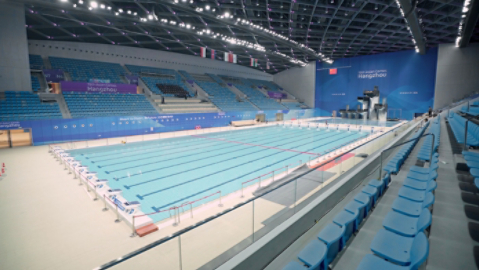While the Covid-19 pandemic brought the importance of indoor air quality (IAQ) and its impact on human health and safety to the forefront of the public health conversation, the topic isn’t a new one. Nearly 40 years ago, a report by the World Health Organization suggested that up to 30% of buildings worldwide were the subject of excessive IAQ-related complaints, including cough, dizziness, chest tightness and muscle aches. The phenomenon became known as “sick building syndrome,” with inadequate ventilation frequently cited as a key contributing factor. Considering that the average person spends about 90% of their time indoors, it’s no wonder that scientists and medical practitioners alike have spent much of the past four decades calling for improved IAQ building standards.
Indoor air pollution is considered to be one of the top five environmental risks to public health. From indoor carbon dioxide (CO2) and fine particulate matter like pollen and pet dander to volatile organic compounds (VOCs) originating from paints, fabrics and cleaning and personal care products, indoor pollutants have been associated with harmful health effects, such as headaches, fatigue, irritation and even several chronic diseases.
While the air we breathe indoors is usually a cocktail of compounds, CO2 is commonly used as an indicator for IAQ. And since the average human exhales more than two pounds of carbon dioxide daily, the concentration of indoor CO2 is a good indicator for how densely occupied a space is.
Over the past two years, indoor CO2 has received even more attention from both media and policymakers as a proxy for the risk of airborne disease transmission. During the pandemic, some countries, like Belgium, went as far as mandating the installation of carbon dioxide monitors for certain indoor venues. In the United States, there were stories of mothers sneaking CO2 monitors into their children’s backpacks before sending them off to school.
However, pinpointing CO2 as a sole indicator for IAQ may cause more harm than good in the long term. According to the American Society of Heating, Refrigerating and Air-Conditioning Engineers (ASHRAE), while carbon dioxide concentrations are useful for assessments and airborne disease transmission risk predictions, they do not provide an overall indication of IAQ. Moreover, air cleaning technologies that focus only on removing CO2 won’t necessarily make spaces healthier for occupants. Aside from potentially neglecting other indoor pollutants that may cause harm to occupants, monitoring CO2 levels typically leads to mitigation strategies that seek to bring more outdoor air into the building through a mechanical ventilation system.
But this isn’t always the best solution—for occupants and the environment. Here’s why.
Outdoor air isn’t always free
Let’s revisit the 1980s, when sick building syndrome first made headlines and poor ventilation was seen as the culprit. Back then, the root cause was attributed to energy conservation measures, which had caused decreasing ventilation rates and tighter building envelopes. As a result, ASHRAE increased minimum design ventilation rates for commercial buildings, ensuring HVAC systems could renew the air inside a building more frequently. Inevitably, this consumed more energy.
Fast forward to the 2020s and another issue is worrying the building industry: how to improve air quality in buildings to reduce the risk of airborne transmission amid a pandemic. Ventilation has once again been brought to the forefront, with organizations like ASHRAE and the Centers for Disease Control and Prevention (CDC) promoting further increases in ventilation rates—incentivizing those who can to run their ventilation systems with 100% outdoor air.
But hands-on experience has shown that increasing ventilation is a technical challenge for older buildings, which simply weren’t designed for such rates. The result is often a significant energy penalty. By bringing in more outdoor air, HVAC systems must work harder to provide supplemental cooling or heating, depending on the season. A UC Davis study, supported by Trane Technologies, discovered that supplying 100% outdoor air increased average HVAC energy use by 45% in schools across 13 cities in the U.S.
Viewing ventilation (for which CO2 is an indicator) as a silver bullet for IAQ carries with it a serious risk of increasing energy bills and greenhouse gas emissions, undoing decades of gains in building energy efficiency—with no guarantee of optimal indoor air quality.



















